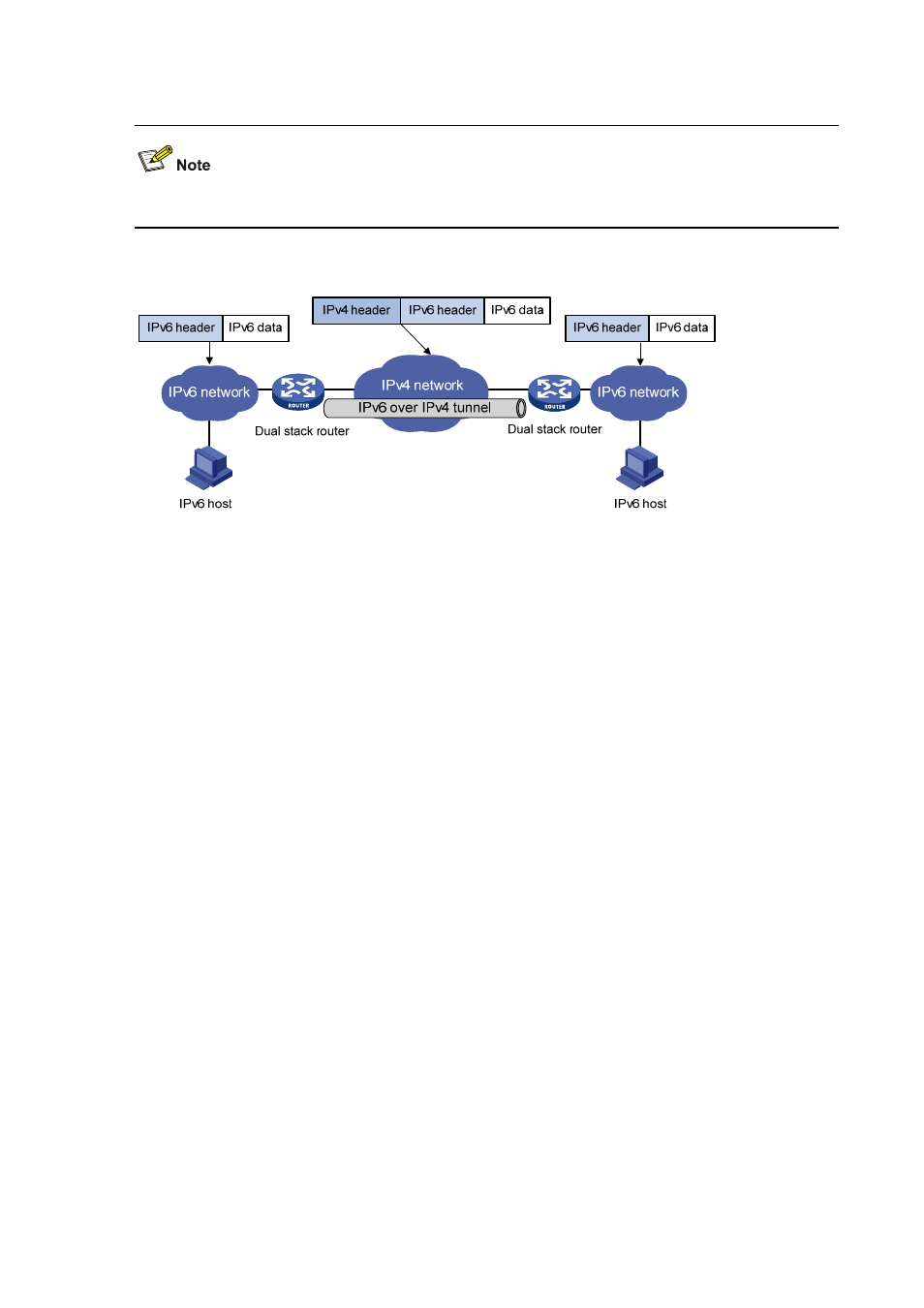Configured tunnel and automatic tunnel – H3C Technologies H3C S7500E Series Switches User Manual
Page 160

15-3
The devices at both ends of an IPv6 over IPv4 tunnel must support the IPv4/IPv6 dual stack.
Figure 15-1 IPv6 over IPv4 tunnel
The IPv6 over IPv4 tunnel processes packets in the following way:
1) A host in the IPv6 network sends an IPv6 packet to the device at the source end of the tunnel.
2) After determining according to the routing table that the packet needs to be forwarded through the
tunnel, the device at the source end of the tunnel encapsulates the IPv6 packet with an IPv4
header and forwards it through the physical interface of the tunnel.
3) The encapsulated packet goes through the tunnel to reach the device at the destination end of the
tunnel. The device at the destination end decapsulates the packet if the destination address of the
encapsulated packet is the device itself.
4) The destination device forwards the packet according to the destination address in the
decapsulated IPv6 packet. If the destination address is the device itself, the device forwards the
IPv6 packet to the upper-layer protocol for processing.
Configured tunnel and automatic tunnel
An IPv6 over IPv4 tunnel can be established between hosts, between hosts and devices, and between
devices. The tunnel destination needs to forward packets if the tunnel destination is not the final
destination of the IPv6 packet.
Tunnels are divided into configured tunnels and automatic tunnels depending on how the IPv4 address
of the tunnel destination is acquired.
z
If the destination address of an IPv6 over IPv4 tunnel cannot be acquired from the destination
address of IPv6 packets, it needs to be configured manually. Such a tunnel is called a configured
tunnel.
z
If the interface address of an IPv6 over IPv4 tunnel has an IPv4 address embedded into an IPv6
address, the IPv4 address of the tunnel destination can be acquired automatically. Such a tunnel
is called an automatic tunnel.
